Getting Into: Negură Bunget (2011-2021)

| Written by: | RaduP |
| Published: | 25.12.2021 |
Click here for PART I
In my journey of writing Getting Into articles, there has rarely been a case where I felt that it absolutely necessarily had to be me who wrote them. I wrote ones for Agalloch and Opeth and Mogwai, who were very important formative bands for me, some of which I discovered through Metal Storm, but if somebody else wrote them, I wouldn't mind that much. I couldn't say the same thing for Negură Bunget. The band that put my country on the metal map, and that proved that there could be more to our metal than just our versions of what was already out there. A band where I felt like I had the right cultural context to really understand it. Mostly. Their archaic lyrics are often indecipherable to me as well, but I can't help but feel it anyway.
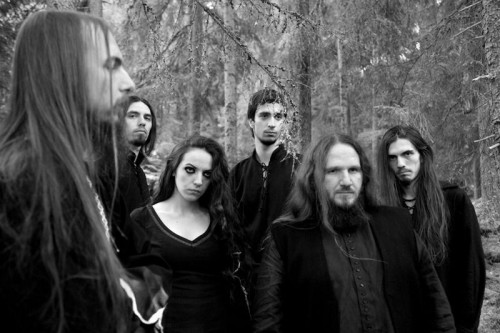
The 2010-2013 lineup
I already touched on the classic era of the band in the first part, the one that contains their uncontested magnum opus, OM. But that article already covered their 2009 break-up, as well as the first releases by each side of the split. This left this second article to cover a less popular side of the discography. It's not surprising that renditions of a beloved band in which the only original member remaining is the drummer would have its legitimacy questioned. The details of the 2009 break-up are still not completely known, and perhaps it is for the best that things stay that way. With the classic days behind us, this article focuses more on the splintered Negură Bunget, and the conflict between trying to recreate OM's magic and trying to create their own path. Whether the branch of the band that kept the Negură Bunget name, or the other two thirds of the classic lineup in their Dordeduh form, and the myriad of related bands and side-projects.

The 2013-2017 lineup
As Huppogramos and Sol Faur formed Dordeduh, drummer Negru, who in the meantime was also working on his Din Brad side project, recruited members of the live lineup and others into a new incarnation of Negură Bunget, which also had two of its members split to return to their Syn Ze Șase Tri project, being replaced by more bandmates from Argus Megere, before that lineup also imploded in 2013. A new lineup would be created, half of it coming from Grimegod members, with an increased visual presence courtesy of Thy Veils' Daniel Dorobanțu. In the meantime, Huppogramos and Sol Faur also created the Sunset In The 12th House side-project, and shortly revived Makrothumia before morphing it into Transceatla. Negru's death seemingly left the Transylvanian Trilogy he embarked on unfinished, leaving much of the rest of the lineup to start the Sur Austru project. Years later, Zău, Negură Bunget's swansong was released. And this is where we halt our story.
And, like with the previous article, I will have to warn you that a lot of album and song titles on streaming services don't use the proper Romanian alphabet, replacing the special characters like ă”, “î”, “ș”, and “ț” with their closest Latin relative. Just so you know.
And while I timed the first article to almost coincide with Zău's release, I bring this article as a Christmas gift to all of you. And also because I'm hours away from celebrating me and my lover's seventh anniversary.
Somehow ironically, we start the article with the last release featuring the classic trio, even if we already touched on post-breakup albums by both parties in the previous article. Focul Viu is a live album, Negură Bunget’s only such album, recorded in 2008 in Bucharest, showcasing the classic lineup in its final phase. A lot of the live members would eventually turn into the first post-breakup lineup, like Inia Dinia on keyboards, Ageru Pământului on folk instruments, and Corb on guitars. But it also features Andrei Popa of Illuminati on bass and Alin Drimuș of Marțolea on wind instruments. The setlist is pretty spread out across their 2000-2006 stuff, with some obvious emphasis on stuff from OM, since that was the album they were touring for, and the one that had the most songs. A lot of the non-OM material would rarely if ever be performed after the breakup, so it’s nice to have some live version of it put to record. In a way I can tell why Negură Bunget didn’t do more live records, not only because live records are generally less popular anyway, but also because it’s quite difficult to translate the experience of actually being at a Negură Bunget show. And as someone who only got to see the last incarnation of the band live, it’s quite saddening to think that there will never be another opportunity. As far as live albums go, Focul Viu is pretty tight in both performances and mixing, but I don’t feel like any of these songs benefit from the live medium.
Already one year after the classic lineup imploded, there were already more lineup changes happening inside Negură Bunget, when Corb and Spin left to focus on Syn Ze Șase Tri, and thus they were replaced by guitarist Urzit and guitarist/vocalist/man-of-many-projects Fulmineos, the latter being a bandmate of Inia Dinia and Ageru Pământului from Argus Megere and others. Poartă De Dincolo is the only release of this lineup. What boggles me is that this lineup persisted until about 2013, but for a four tracks EP that is 28 minutes long, it’s in a very weird position. It feels like it could have been an actual album if they only added one more track, and at the same time it feels really like a rushed auto-pilot job, with the material here feeling like B-sides from the last album at best. “La Marginea Lumii” and the title track are some of the worst songs done by the band, while the other two tracks are just serviceable enough. This is a release that had potential to be more than this, especially since the musicianship is still great, but the end result is rushed and forgettable.
Considering that two of its members just had stints in Negură Bunget, you’d think that Syn Ze Șase Tri would sound more like the period of the band that the members were in, but Syn Ze Șase Tri sounds more like mid 90s Negură Bunget than anything else, except with a more modern production, even cheesier symphonic passages, and some interesting passages as well. The band was formed in 2007, and a bunch of the songs were written around the same time, so it’s understandable that some of them are a bit primitive, and the band would go on to make slightly better music afterwards, but this is the only release that has both Spin and Corb. In the meantime all members except Corb have left the band, so there’s even more Negură Bunget parallels than meet the eye. As far as Syn Ze Șase Tri’s music and Între Două Lumi in particular are concerned: not great, not terrible. But Între Două Lumi especially sounds pretty cheap.
A lot of Negură Bunget dived pretty deep into Romanian folk music, but it was always a way of blending it either with new age ambient or black metal. Din Brad seeked to focus more specifically on Romanian folk music and its take on yearning and longing. Formed by Negru, and joined here by vocalist Alma, keyboardist Inia Dinia, and bassist/folk instrumentalist Gadinet, Din Brad take on folk songs about pain, longing, solitude in a darkwave-ish neofolk direction, very focused on percussion and ominous synths. Intertwined with these band renditions lie actual local musicians singing these painful songs with nothing but their own voices. Simple as the songs are, they ooze of so much emotion, especially the actual folk ones, but the band manages to inject their own darkness into their renditions too. And Rotting Christ fans will probably recognize at least one song. It’s another case of something I might not rate as highly if it wasn’t so unique. If there’s any album here that will make you want to dive deeper into Romanian folk, it’s this one.
Dar De Duh is a behemoth of an album. Both in terms of it being nearly 80 minutes long, and in terms of the sheer scope it has. After Dordeduh teases their sound with the Valea Omului EP, Dar De Duh had the huge responsibility of being the first album of the duo that made OM, since the other incarnation of Negură Bunget already had a head start. I have a lot of feelings towards this album because it was the one that opened the Negură Bunget rabbit hole for me, and it’s definitely my most listened-to album of the bunch. I am somewhat privileged as a result, because these songs have already grown on me so much that I am no longer intimidated by the massive runtime and the relative lack of hooks. Dar De Duh is absolutely masterful at crafting an atmosphere and shifting sequences, and the band has such a strong commanding presence all over it. It’s impossible not to compare this to OM, especially since they have pretty similar paths to the same result, but I feel like Dar De Duh takes a more Enslaved-esque approach to making the sound more progressive. Alin Drimus also does folk instruments here, as he did on OM, but there are other musicians doing flutes and dulcimers and percussion done by other guests. Bookended by “Jind De Tronuri”, the longest track on display and the pinnacle of folk black metal perfection, and “Dojana”, which drops everything except the folk to completely focus on the interplay between dulcimers, tulnics, toacas, and vocals. I was hesitant to rate it the same as OM, but it’s so jam-packed with moments I love, plus one of my first interactions with Metal Storm was reading the comments for “Jind De Tronuri” and seeing someone complain that it’s nothing compared to OM because it’s slow and doesn’t have solos and that Metal Storm’s rating fairly rate it below OM. Well… who’s laughing now?
Gînd A-Prins is a single that’s barely over 10 minutes in runtime, and only contains two songs. So I guess you could make the case that it is an EP. But the last song is unique to this release and this was the first release of Negură Bunget’s final lineup. So more of a testing of this incarnation and a teaser for what would potentially come than a release proper, and it shows. While the previous two incarnations had musicians from a black metal background and that had been part of the live lineup for years, this was a complete reinvention where most of the lineup came from Grimegod, a gothic death/doom band. “Curgerea muntelui” makes pretty great use of synth ambiance and layers of tulnics and a trumpet, but feels awkward when it transitions to metal. “Tăul Fără Fund” is an attempt at the folkish new age ambient, but the “heyaheyahey” vocals drag it down, so I can see why out of the two, only “Curgerea muntelui” made the cut to the actual full-length. Only for completionists. Album title is a cool wordplay though, because “gînd a prins” means “thought it caught”, and “gînd aprins” means “inflamed thought”.
When Negură Bunget’s lineup was reinvented in 2013, two of those members (the vocalist and the bassist) came from Arad’s Grimegod. I’m in a pretty weird spot with Grimegod. This is the oldest band on the list, having been formed in 1991 and releasing their first demo in 1994, continuing with a streak of releases up until 2000’s With Broken Wings. I’m not exactly sure how to assess the quality of those releases, because the production sounds about as great as you’d expect a metal album in 90s Romania to sound like. Wrong Roads, by comparison at least sounds decent. I’m obviously spoiled, since I didn’t live through that era, and their “hit” song was released before I was even born. However, good luck listening to their music officially. All of their previous stuff was only released on cassette by obscure labels, and this one seems to be sold out too. It’s not on streaming services, it’s not on Bandcamp. And whereas you can find pretty much every other album they’ve done in full on YouTube, that’s not the case with Wrong Roads. Which is a shame, because even if the production is still not stellar, this feels like the most creative and fulfilled Grimegod album. A lot of Romanian death/doom/gothic bands from the era like Gothic, Abigail (ROM), Interitus Dei, DinUmbră are still around, at least theoretically, but none of them really had the success of Romania’s black or folk metal bands. With a huge chunk of the current lineup of Grimegod’s lineup also being in Sur Austru, maybe this band’s legacy will have some of its dust wiped.
After the Gînd A-Prins teaser, the last lineup kicked in with Tău, which was to become the first part of a “Transylvanian Trilogy”. And it is also the Negură Bunget album with the most impressive guest lineup, with Sakis Tolis (Rotting Christ), Rune Eriksen (Aura Noir, ex-Mayhem), and even someone the complete opposite side of the folk appreciation through the MC of folktronica hip-hop group Subcarpați. So, to say that Tău is an ambitious affair is an understatement. In a way, it reminds me of a lot of early Negură Bunget in that its ambitions are not yet in the group’s grasp, and it’s clear that this lineup is still awkwardly getting the hang of how to craft the sound. A lot of the extra instrumentation, like the theremin in “Nămetenie”, the gloomy pianos in “Tărîm vîlhovnicesc”, the Balkan brass in “Împodobeala timpului”, or the trumpet and tulnics in “Curgerea muntelui”, does create a great sense of atmosphere, even if not all of it can fall in the “folk” umbrella. But when blended with the black metal parts, they do feel quite undercooked, the transitions anything but seamless, in a way that lets the end product be less than the sum of its parts. And for something that still sounds pretty challenging, it’s still somewhat dull at times. But all of the moments that do work really bring home the idea that said ambition could pay off in time, even if the trilogy’s debut started on the wrong foot. And I can’t help but be in awe at how much the band is biting here. And I can’t not respect it for that.
Dordeduh was not the only band formed by Edmond Karban and Cristian Popescu after leaving Negură Bunget, but whereas Dordeduh felt like a continuation of what they were already doing, Sunset In The 12th House was the detour. Joined by Sergio Ponti on drums and Mihai Moldoveanu, both of them either live or full Dordeduh members, Sunset In The 12th House is a dive into the post-rock/metal undertones that were already present in their most recent material. There’s a clear sensation that this was definitely made by the same people that made Dar De Duh in how the melodies sound and progress, but also the soundscapes evolve into ways that are unique for this project. It’s more of a post-rock than a post-metal album, even though there are really heavy moments in “Seven Insignia” and “Rejuvenation”, the latter being the only song on the record to have vocals, those being of the harsh kind here. There’s a variety of moods and soundscapes to be found, from the aggressive bookending tracks, to the oriental folk of “Desert's Eschaton” and the gloomy melodies of “Paraphernalia Of Sublimation”, the ethereal “Arctic Cascades” (which features one of my favorite post-rock guitar melodies), and thus the album’s title is perfectly fitting. The songs do feel a bit too long for their own good, but it’s still a pretty unique take on the sound.
Already one year after starting the “Transylvanian Trilogy”, Negură Bunget came out with the second instalment. Despite the short amount of time between the two, there has been a pretty significant amount of growth. It’s not like the issues that plagued Tău are completely gone, but Zi is a combination of the band adjusting their ambition towards something more achievable, and also clearly being a more competent band than they were just one year ago. The transitions don’t feel jarring anymore, their myriad of influences doesn’t really feel that wild, and their guest performers are no longer star-powered metal alumni, but just people that can provide the vocals or dulcimers that the songs require. “Tul-ni-că-rînd” might be a lesser version of “Pămînt”, but the build-up pays off. There’s fantastic black metal sections in “Grădina stelelor” and “Baciul moșneag”, and closer “Marea cea mare” is a pretty massive post-rock number. None of them may have the immense power of songs from OM or Vîrstele Pămîntului, but they show the lineup finally more comfortable in their skin, and showing the potential of finally making something great, and with one more album left in the trilogy, they might have had that chance. But Negru’s death in early 2017 meant Zi would be the last album recorded in this outfit. This is also the only one that comes with some pretty interesting remixes in its deluxe edition.
It’s hard not to turn this write-up into a namedrop fest, because Argus Megere is pretty much at the center of an incestuous scene. Starting out in 1996 as Argus (ROM), thus being about as old of a band as Negură Bunget, but one even more focused on raw second wave worship. Centered around the duo of Fulmineos (also of Ordinul Negru and Katharos XIII) and Ageru Pământului (who also played together with Fulmineos in Fogland), and along with Inia Dinia (who also played in Din Brad and with Fulmineos in Kultika and Dara) they all were part of Negură Bunget bunget’s lineup between 2010 and 2013, with the latter two having been live members and then actual members from before that time. The reasons I’m picking VEII instead of any of their older albums are multiple: it’s their best, it’s the only one you’ll find streaming officially, and, in addition to the aforementioned trio, it has Putrid (also of Dordeduh, Sunset In The 12th House, Ordinul Negru and Syn Ze Șase Tri) on drums, and Urmuz (of Ordinul Negru and Syn Ze Șase Tri) on bass. I told you it was gonna be a lot of name-dropping. Need a map yet? Welcome to the Timisoara scene! You’ll love these four really long black metal tracks. Argus Megere are a bit more traditional (in the black metal sense) than Negură Bunget, with the folk and progressive leanings being more subdued, and you can kinda tell why one of them made it big internationally, while the other stayed pretty local, but VEII is a pretty good entry point towards the rest of the Timisoara scene, especially the stuff that came out in the last 7 or so years. The solo in “Umbre în piatră apuse” alone takes it up half a star.
After Negru’s death in 2017, most of the lineup went on to form Sur Austru, while also continuing to make music in mostly the same genre as the last couple of Negură Bunget records. There’s obviously a lot of parallels to be drawn to those albums, but with the band being free of having to live up to the “Negură Bunget” name, they seem more comfortable at using that sound as a core and working further with that. There are some moments that betray how much of this lineup has roots in the death doom Grimegod, but with their songwriting skills taken to new levels. The songs have a fantastic ebb and flow, with a layered sound in which the black/doom elements and the folk elements drone together to create a timeless atmosphere. But it still feels like there is just a little bit missing for the band to really reach its own sound.

2019 - Thy Veils - Neoradiant




Daniel Dorobanțu has been a pretty significant part of this decade of Negură Bunget, handling most of the visual aspects of the band (he’s even listed as a member on metal-archives), he remixed one of the tracks on the deluxe version of Zi, and he even played keyboards live for the band back in the late 90s. Also since the late 90s he’s been creating electronic music both under his own name and under the Thy Veils project. With a pretty vast body of work, and criminally underappreciated, I decided to highlight Neoradiant, not only because some of the guests involved, like vocalist Manuela Marchis and trumpetist Petre Ionuțescu, also lended their hand to the last couple of Negură Bunget records, or because the Bandcamp page also links all of the videos from this release, all of them visually fascinating, but also because this is a fantastic piece of ambient pop, trip-hop and electronica. With the truly ethereal soundscapes of Neoradiant, I’m pretty baffled that Dorobanțu’s contributions were almost purely visual. And yet I can’t deny that his talents in that aspect are immense.
Arguably the most anticipated record on the list was Dordeduh’s follow-up to the stellar Dar De Duh, nine years in the making, time during which the band released only that Sunset In The 12th House album. And the long wait only made the expectations for Har even higher. Har is pretty different from Dar De Duh, despite being cut from mostly the same cloth. The sound is overall softer, still retaining its black metal side, and the harsh vocals are still vicious, but much more emphasis is placed on the bits that are more melodic, and even the harsher sides feel less interested in being ferocious. That might seem like it would lead to the band pushing the folk side even further, but the folk sides are also pushed back, leaving Har to sound even more Enslaved-esque than the debut. The album is shorter, the melodies are more inviting, being much more instantly gratifying and filled with hooks, thus switching around Dar De Duh’s usual critiques of being too long and hookless. There are no longer any guests, with all the folk instruments played by the four members, including new drummer Andrei “Putrid” Jumugă (also of Argus Megere and Ordinul Negru), with the only proper guest contributions being the symphonic arrangements in “Vraci de nord” done by Adrian Tăbăcaru. The band seemed pretty certain they couldn’t top Dar De Duh anyway, so they changed tracks, and they’re still extremely apt even while changing some of the parameters of their sound.
Obârșie is not too different from Sur Austru’s debut album, Meteahna Timpurilor, in that they sound like continuously polished versions of folk black sound they played while in Negură Bunget. But lacking the name and the expectations that come with it, Sur Austru were able to craft something that gets pretty close to being their own sound. Clearly more adept at it with each release, but only so gradually, Obârșie is in the middle between sounding like Sur Austru perfected the sound of Meteahna Timpurilor and sounding like maybe there’s room for something even better than this. But looking at it almost a year since it was released, it contains so many moments that still feel surprising, both in terms of the flute-dominated folk, the ambient synths, but then who can forget the riff-fest? With a sound already pretty defined, two records two years apart, it seems like Sur Austru is shaping up to be a pretty consistent band.
After Negru’s death in 2017, it seemed like the “Transylvanian Trilogy” would forever stay unfinished. There were rumours that Negru finished tracking his drums and that the other members would finish the album in his memory. And it took a long time for that album to actually be released. It’s the one Negură Bunget I find the hardest to assess. I understand its constraints and I celebrate its existence, but even after a month of it being out, I’m still not sure whether it’s closer to a Frankenstein’s monster or the crowning achievement of the trilogy. In each listen I feel closer to one of the two, and rarely in the same way. It seems to be the highest rated of the three, but it’s also undeniable that the production is needlessly muddy and that the band had to make do with what they could scarvange out of Negru’s recorded drum tracks, and, as a result, the black metal sections are sparse and weirdly mixed. And so, Zău is an album that shines the most in its new age ambient sections most, and indeed those are some of the best that the band has produced in the decade. I can only imagine what Zău would have sounded like if it was completed while Negru was alive, but what we ended up with is a proper closer to the trilogy and the Negură Bunget name, despite its obvious flaws.
I find it extremely ironic that Negură Bunget, Dordeduh, and Sur Austru all released albums in the same years, especially since the former two had such long waits. But that also marked such a clear line for me that this is where the article should stop. The Negură Bunget name has been put to rest. Dordeduh and Sur Austru are content to have their bands no longer require that name, instead forging legacies of their own. And all the bands that had members take part in Negură Bunget are doing their own thing. As large as OM's shadow still looms, it became less of an unattainable high standard to strive for, and more of a fertile soil for the entire Romanian scene to flourish since it opened the floodgates. And the world became much richer for it.
This article is dedicated to the memory of Gabriel "Negru" Mafa.
 | Written on 25.12.2021 by Doesn't matter that much to me if you agree with me, as long as you checked the album out. |
Comments
Comments: 5
Visited by: 96 users
| Dinruth Posts: 420 |
| Bad English Tage Westerlund |
| Iceland_Norway |
| RaduP CertifiedHipster staff |
| Iceland_Norway |
Hits total: 2473 | This month: 19

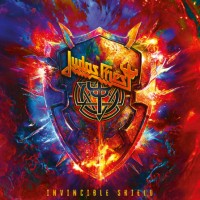


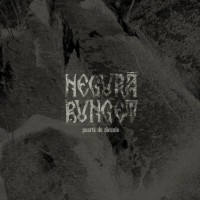

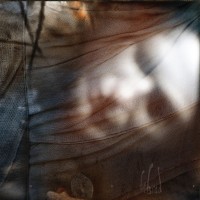
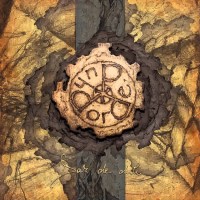
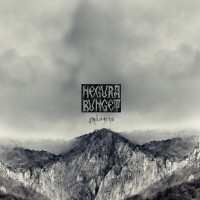
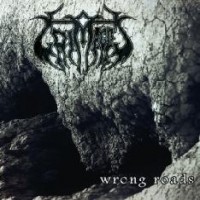
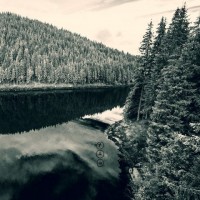

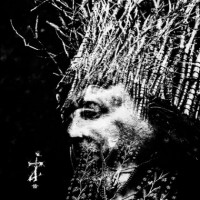

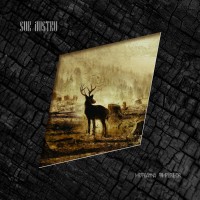
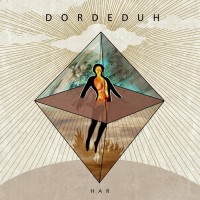
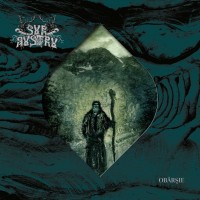

 apos;'
apos;'